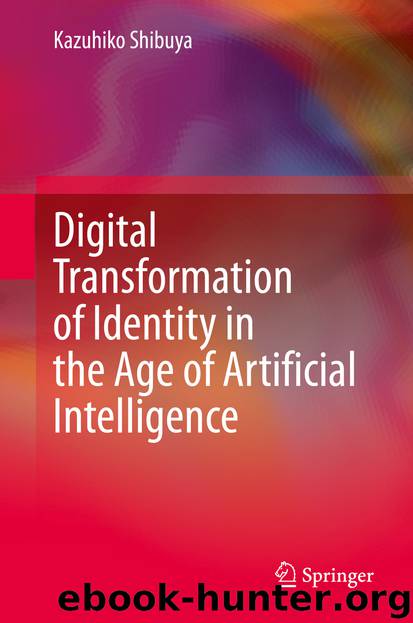Digital Transformation of Identity in the Age of Artificial Intelligence by Kazuhiko Shibuya

Author:Kazuhiko Shibuya
Language: eng
Format: epub
ISBN: 9789811522482
Publisher: Springer Singapore
9.5 Conclusion of Simulation
What this simulation suggested was that migration problems are firstly relevant to national sovereignty and identity among the citizens in the host country. Second problem is how to resolve between human right and acceptance of innumerable migrants. And thirdly, atmosphere of such acceptances in the host country will engender different consequences, whether migrants intend to be hired as longer-term workers or accepted as tentative refugees and travelers.
Collective phenomena such as migration and dynamics of human behavior vividly appear very salient trends of sequential mobility which were self-organized by innumerable peoples. Even if each migrant hesitates to drive toward another country and each of them does not want to be conspicuous for the accepted host countries, their collectiveness itself may threaten against ordinary citizens in host countries. As such collective phenomena of migrants often threaten against the boundaries of own identification for host citizens, their hospitality for travelers may sooner turn into hateful emotion against migrants. Migrants are often employed as lower-wage workers in the host nation, but some of such jobs itself may be negatively prejudiced by host citizens. Their unfavorable status symbolizes the stigma as prejudice and negative stereotypes against them.
In contrary, immigrated countries, from where many migrants leaved, have been often steadily stagnated in socioeconomic development, because necessary investments, workforces, and resources have been shortages during longer-term periods. Although AI and other technologies have possibilities to be fulfilled for workforces, any government must crucially manage to optimize any resources and prioritize planning.
As this chapter demonstrated an example simulation using DAA, DAA-based acceptance of migrants in each city has to be exemplified to plan for future workforce balance. Each city might be considered to activate their planning and evaluate acceptable risks against migration policy itself. Therefore, the digitized age will further reshape our working needs, commuting patterns, and working environment, and the cases of migration policy in each nation will alter both outbound and inbound mobility patterns, and the modality of national identifications among citizens and migrants will be also perhaps transformed.
References
Abowd, G. D., & Mynatt, E. D. (2000). Charting past, present, and future in ubiquitous computing. ACM Transactions on Computer-Human Interaction, 7(1), 29–58.
Download
This site does not store any files on its server. We only index and link to content provided by other sites. Please contact the content providers to delete copyright contents if any and email us, we'll remove relevant links or contents immediately.
Algorithms of the Intelligent Web by Haralambos Marmanis;Dmitry Babenko(8522)
Test-Driven Development with Java by Alan Mellor(7411)
Data Augmentation with Python by Duc Haba(7303)
Principles of Data Fabric by Sonia Mezzetta(7053)
Learn Blender Simulations the Right Way by Stephen Pearson(6989)
Microservices with Spring Boot 3 and Spring Cloud by Magnus Larsson(6810)
RPA Solution Architect's Handbook by Sachin Sahgal(6222)
Hadoop in Practice by Alex Holmes(6031)
The Infinite Retina by Robert Scoble Irena Cronin(5922)
Jquery UI in Action : Master the concepts Of Jquery UI: A Step By Step Approach by ANMOL GOYAL(5873)
Big Data Analysis with Python by Ivan Marin(5722)
Life 3.0: Being Human in the Age of Artificial Intelligence by Tegmark Max(5403)
Pretrain Vision and Large Language Models in Python by Emily Webber(4686)
Infrastructure as Code for Beginners by Russ McKendrick(4464)
WordPress Plugin Development Cookbook by Yannick Lefebvre(4196)
Functional Programming in JavaScript by Mantyla Dan(4124)
The Age of Surveillance Capitalism by Shoshana Zuboff(4116)
Embracing Microservices Design by Ovais Mehboob Ahmed Khan Nabil Siddiqui and Timothy Oleson(3983)
Applied Machine Learning for Healthcare and Life Sciences Using AWS by Ujjwal Ratan(3961)
